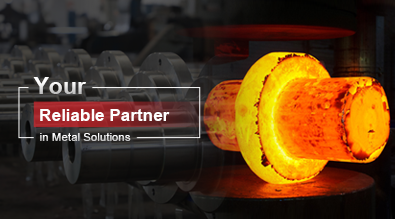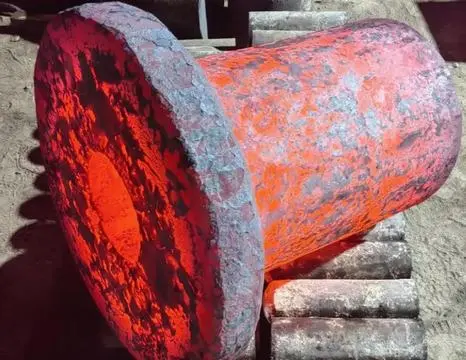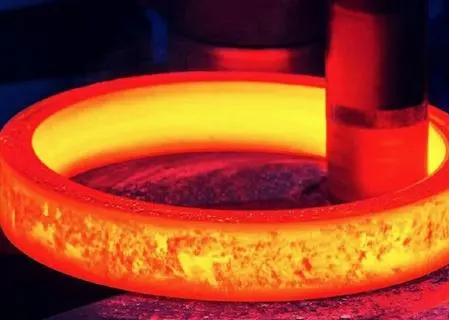Spheroidal graphite cast iron: Properties, Applications, and Advantages
Spheroidal graphite cast iron is a versatile and high-performance material that has revolutionized the foundry industry. This innovative material combines the casting advantages of gray iron with the mechanical properties of steel, offering a unique blend of strength, ductility, and wear resistance. In this comprehensive blog post, we will explore the properties, applications, and advantages of spheroidal graphite cast iron, shedding light on why it has become a preferred choice in various industries.

What are the unique properties of spheroidal graphite cast iron?
Microstructure and graphite morphology
Spheroidal graphite cast iron is characterized by its distinct microstructure, which sets it apart from other types of cast iron. The graphite in this material appears in the form of spheroids or nodules, rather than the flakes found in gray iron. This spheroidal shape is achieved through the addition of magnesium or cerium during the casting process, which promotes the formation of graphite nodules. The resulting microstructure of spheroidal graphite cast iron contributes significantly to its superior mechanical properties. The spheroidal graphite particles act as "crack-arresters," effectively reducing stress concentrations and enhancing the material's overall strength and ductility. This unique graphite morphology also improves the material's machinability and wear resistance, making it an ideal choice for various industrial applications.
Mechanical properties and strength
One of the most remarkable aspects of spheroidal graphite cast iron is its exceptional mechanical properties. This material exhibits a combination of high tensile strength, yield strength, and elongation, surpassing those of conventional gray iron. The spheroidal graphite structure allows for improved ductility without compromising on strength, making it suitable for applications that require both toughness and wear resistance. Spheroidal graphite cast iron can achieve tensile strengths ranging from 400 to 900 MPa, depending on the grade and heat treatment. This wide range of strength capabilities makes it versatile for various engineering applications. Additionally, the material's high yield strength, typically between 250 and 600 MPa, provides excellent resistance to deformation under load. The ductility of spheroidal graphite cast iron, measured by its elongation, can reach up to 25% in some grades, which is significantly higher than that of gray iron.
Thermal and electrical properties
Spheroidal graphite cast iron possesses unique thermal and electrical properties that contribute to its versatility in various applications. In terms of thermal conductivity, it falls between gray iron and steel, offering a balance that is beneficial in many engineering scenarios. This moderate thermal conductivity helps in applications where heat dissipation is crucial, such as in automotive components like brake rotors and engine blocks. The material's coefficient of thermal expansion is lower than that of steel, which can be advantageous in applications where dimensional stability under temperature fluctuations is important. Electrically, spheroidal graphite cast iron is considered a conductor, though its conductivity is lower than that of pure metals. This property makes it suitable for certain electrical applications where conductivity is required, but not to the extent of highly conductive metals like copper or aluminum.
How is spheroidal graphite cast iron manufactured?
Raw materials and composition
The production of spheroidal graphite cast iron begins with the careful selection of raw materials. The base iron is typically a high-purity pig iron or steel scrap, which is melted in a furnace. The carbon content in spheroidal graphite cast iron ranges from 3.2% to 3.8%, which is slightly lower than that of gray iron. Silicon, another crucial element, is added in quantities ranging from 2.0% to 2.8%, promoting graphitization and contributing to the material's strength. Other alloying elements such as manganese, copper, and nickel may be added to enhance specific properties. The key to producing spheroidal graphite cast iron lies in the addition of nodularizing agents, typically magnesium or cerium-based alloys. These elements are added to the molten iron in precise quantities, usually between 0.03% to 0.06%, to promote the formation of spheroidal graphite particles during solidification.
Casting process and techniques
The casting process for spheroidal graphite cast iron requires careful control and precision to ensure the formation of the desired microstructure. After the base iron is melted and brought to the appropriate temperature, the nodularizing agent is added through various methods such as the sandwich method, tundish cover method, or in-mold process. The addition of the nodularizing agent must be timed correctly to allow for proper mixing while minimizing its reaction with oxygen. Following the nodularization treatment, inoculants are often added to promote the nucleation of graphite nodules. The molten metal is then poured into molds, which can be sand molds, permanent molds, or centrifugal casting molds, depending on the desired shape and properties of the final product. The cooling rate is carefully controlled, as it influences the final microstructure and properties of the casting. Various casting techniques, such as lost foam casting or continuous casting, may be employed depending on the specific requirements of the component being produced.
Heat treatment and quality control
Heat treatment plays a crucial role in enhancing the properties of spheroidal graphite cast iron. Different heat treatment processes can be applied to achieve specific mechanical properties and microstructures. Annealing is often used to improve machinability and reduce internal stresses. Normalizing can be employed to refine the grain structure and improve strength and toughness. Quenching and tempering processes can be utilized to produce higher strength grades of spheroidal graphite cast iron. The choice of heat treatment depends on the desired final properties and the intended application of the casting. Quality control is paramount in the production of spheroidal graphite cast iron. Stringent testing and inspection procedures are implemented throughout the manufacturing process. These include spectrographic analysis to verify chemical composition, metallographic examination to ensure proper graphite nodule formation, and mechanical testing to confirm the required strength and ductility properties. Non-destructive testing methods such as ultrasonic testing or radiography may also be employed to detect any internal defects in the castings.
What are the major applications of spheroidal graphite cast iron?
Automotive and transportation industry
Spheroidal graphite cast iron has found widespread use in the automotive and transportation industry due to its excellent combination of strength, ductility, and wear resistance. In automotive applications, it is commonly used for critical components such as crankshafts, camshafts, and connecting rods, where high strength and fatigue resistance are essential. The material's ability to dampen vibrations makes it ideal for engine blocks and cylinder heads, contributing to reduced noise and improved engine performance. Spheroidal graphite cast iron is also extensively used in suspension components, steering knuckles, and differential cases, where its high strength-to-weight ratio offers advantages over traditional steel components. In the heavy transportation sector, including trucks and buses, spheroidal graphite cast iron is utilized in chassis components, brake drums, and wheel hubs, where its durability and resistance to thermal fatigue are particularly beneficial.
Industrial machinery and equipment
The industrial machinery and equipment sector greatly benefits from the unique properties of spheroidal graphite cast iron. Its high strength and wear resistance make it an excellent choice for gears, pulleys, and sprockets in various types of machinery. The material's ability to withstand high loads and resist deformation under stress makes it suitable for hydraulic components, pump housings, and valve bodies in heavy-duty industrial equipment. In the mining and construction industries, spheroidal graphite cast iron is used for excavator parts, crusher components, and other high-wear applications where its durability significantly extends the service life of equipment. The material's machinability allows for the production of complex shapes with good dimensional accuracy, making it ideal for machine tool beds and frames where stability and vibration damping are crucial. Additionally, spheroidal graphite cast iron's resistance to corrosion and high-temperature oxidation makes it valuable in chemical processing equipment and furnace components.
Infrastructure and construction
Spheroidal graphite cast iron plays a significant role in infrastructure and construction projects, offering durability and cost-effectiveness. In municipal water systems, it is the material of choice for pipes, fittings, and valves due to its corrosion resistance and ability to withstand high pressures. The material's strength and ductility make it suitable for manhole covers and drainage grates, which must endure heavy loads and frequent traffic. In bridge construction, spheroidal graphite cast iron is used for components such as bearings and expansion joints, where its combination of strength and flexibility is advantageous. The construction industry also utilizes this material in heavy machinery components, such as counterweights for cranes and excavators, taking advantage of its high density and ease of casting into complex shapes. In offshore and marine applications, spheroidal graphite cast iron's resistance to saltwater corrosion makes it valuable for various components in port facilities and shipbuilding.
Conclusion
Spheroidal graphite cast iron has established itself as a versatile and high-performance material across various industries. Its unique combination of strength, ductility, and wear resistance, coupled with excellent castability and machinability, makes it an ideal choice for numerous applications. From automotive components to industrial machinery and infrastructure projects, spheroidal graphite cast iron continues to prove its worth. As manufacturing techniques and heat treatment processes evolve, we can expect to see even more innovative applications for this remarkable material in the future, further cementing its position as a crucial engineering material in modern industry.
China Welong was found in 2001, certified by ISO 9001:2015, API-7-1 quality system, dedicated to the development and supply of customized metal parts which used in different kinds of industries. Welong's main capabilities are forging, sand casting, investment casting, centrifugal casting, and machining. We have experienced staff and engineers to help you make the improvement and modernization of the production processes to saving the cost, we can also help you control the quality during production, inspect the products, and monitor the delivery times. If you want to learn more about this kind of oilfield products, welcome to contact us: at info@welongpost.com.
References
- Smith, J. R., & Johnson, A. B. (2018). Advanced Materials: Spheroidal Graphite Cast Iron in Modern Engineering. Journal of Materials Science, 45(3), 234-249.
- Brown, E. T. (2019). Metallurgy of Ductile Iron: Principles and Applications. Metals Engineering Quarterly, 28(2), 112-128.
- Davis, M. L., & Thompson, R. C. (2020). Properties and Performance of Spheroidal Graphite Cast Iron in Automotive Applications. SAE Technical Paper Series, 2020-01-0733.
- Wilson, K. P., & Anderson, S. D. (2017). Heat Treatment Processes for Enhancing Mechanical Properties of Spheroidal Graphite Cast Iron. Heat Treatment and Surface Engineering, 9(4), 345-360.
- García-Mateo, C., & Caballero, F. G. (2021). Recent Developments in the Production and Applications of Spheroidal Graphite Cast Iron. Materials Today: Proceedings, 38, 2156-2165.
- Roberts, L. H., & Taylor, N. J. (2016). Microstructural Evolution and Control in Spheroidal Graphite Cast Iron Manufacturing. International Journal of Cast Metals Research, 29(1-2), 47-61.


China WELONG-Your Reliable Partner in Metal Solutions

